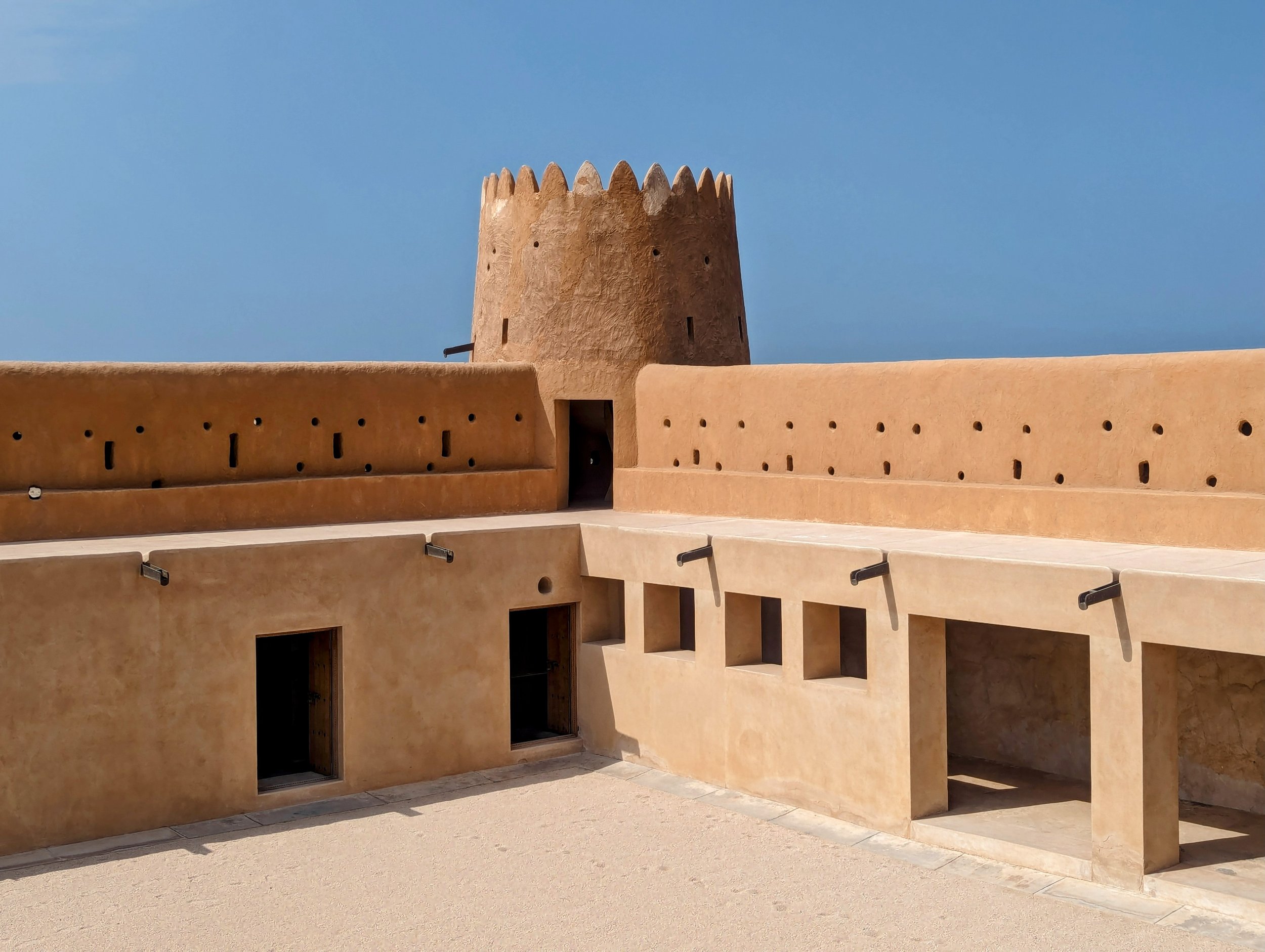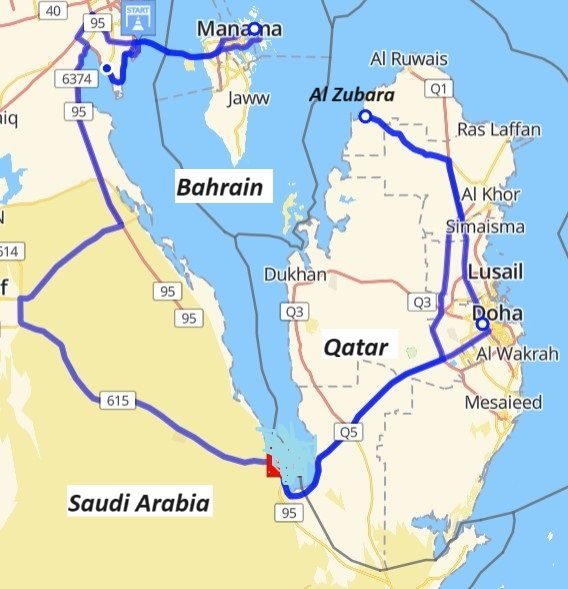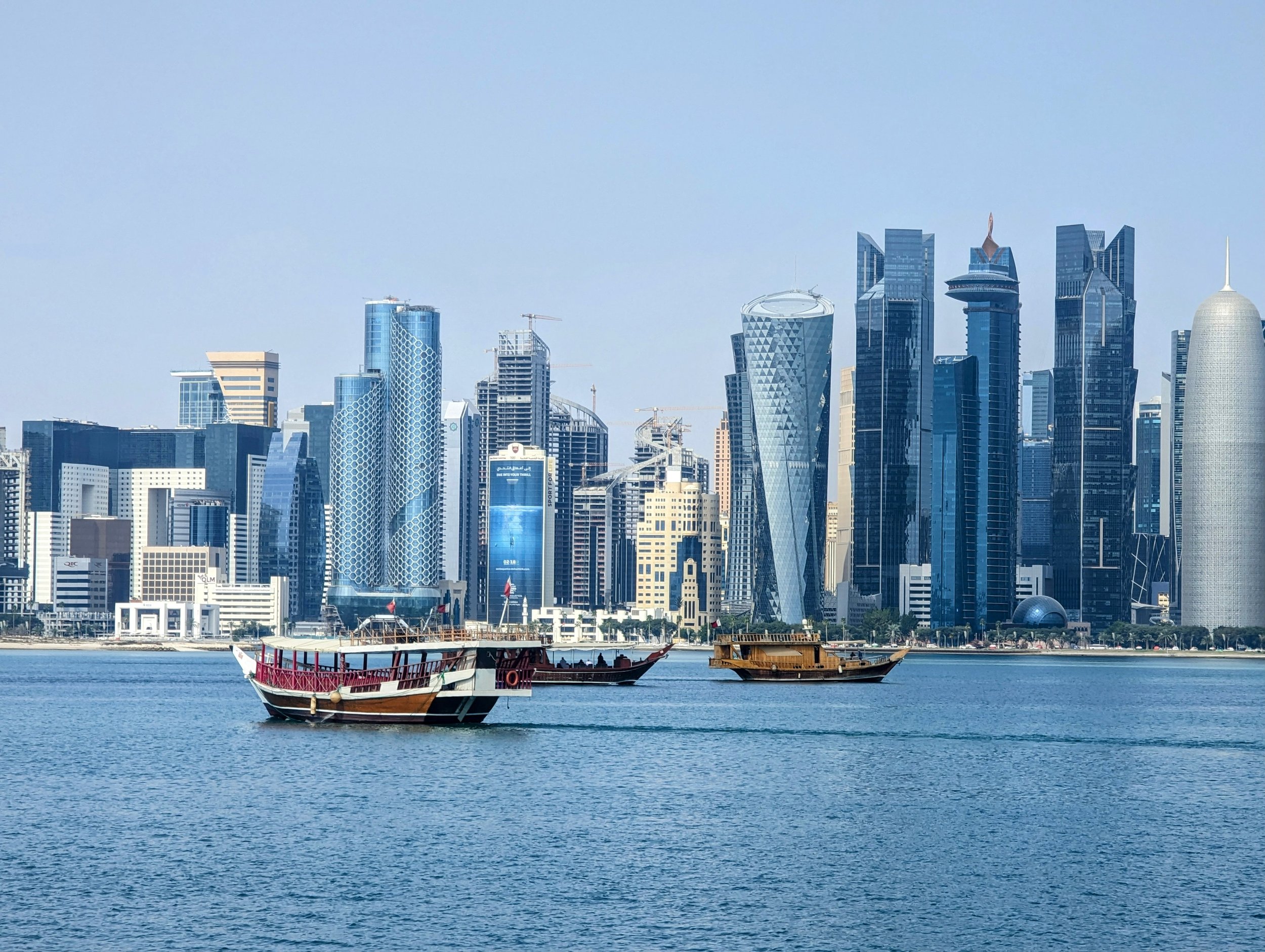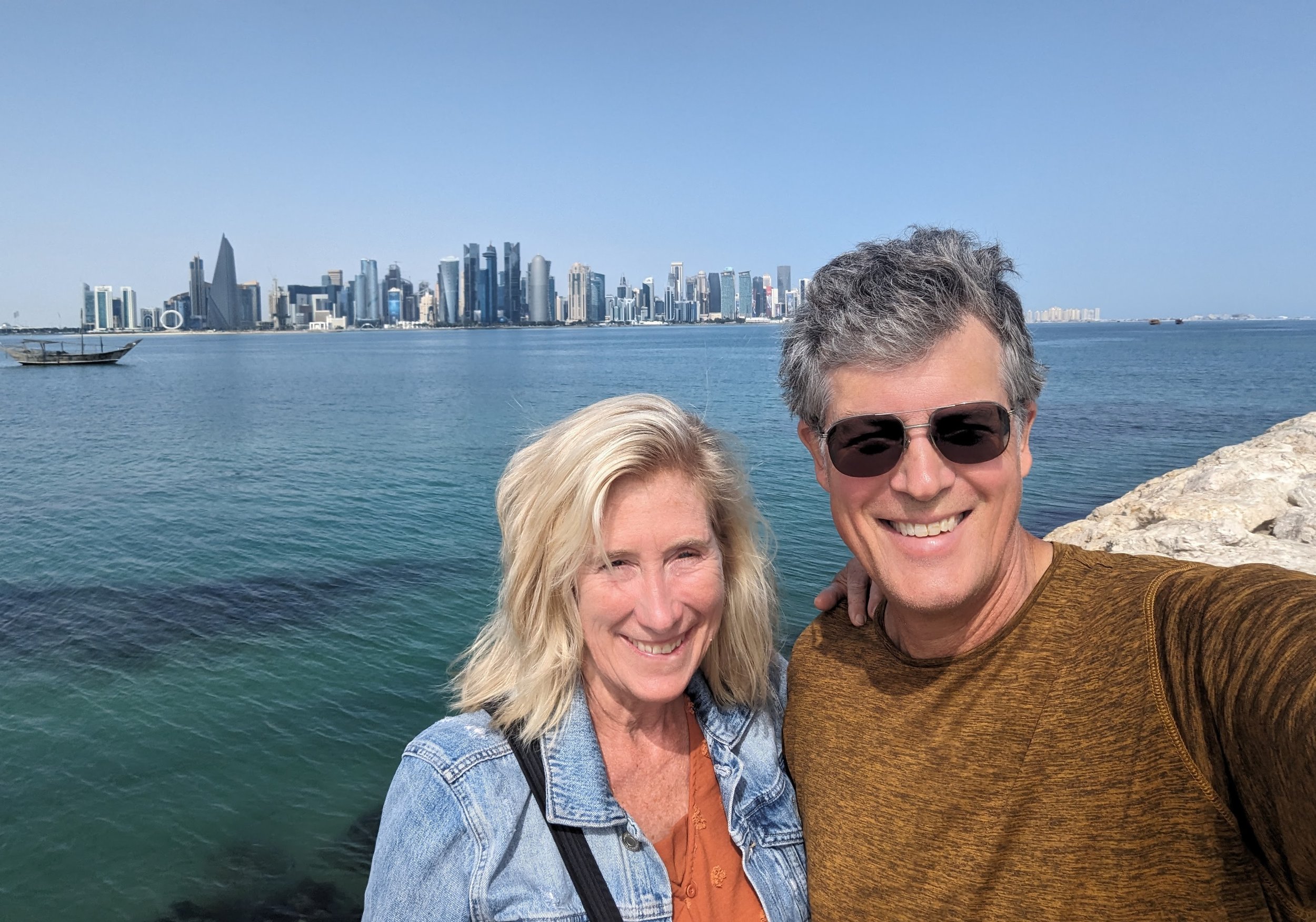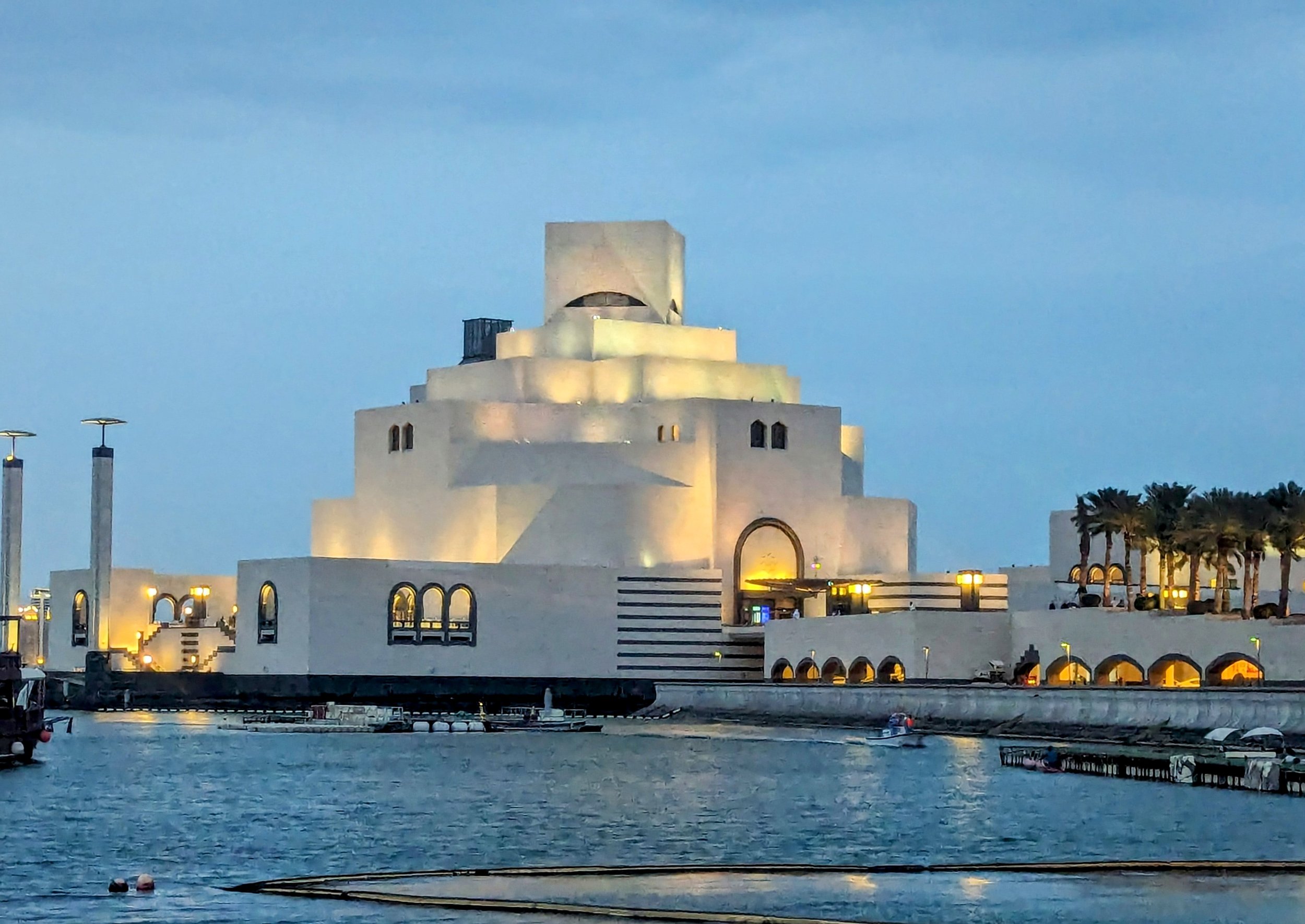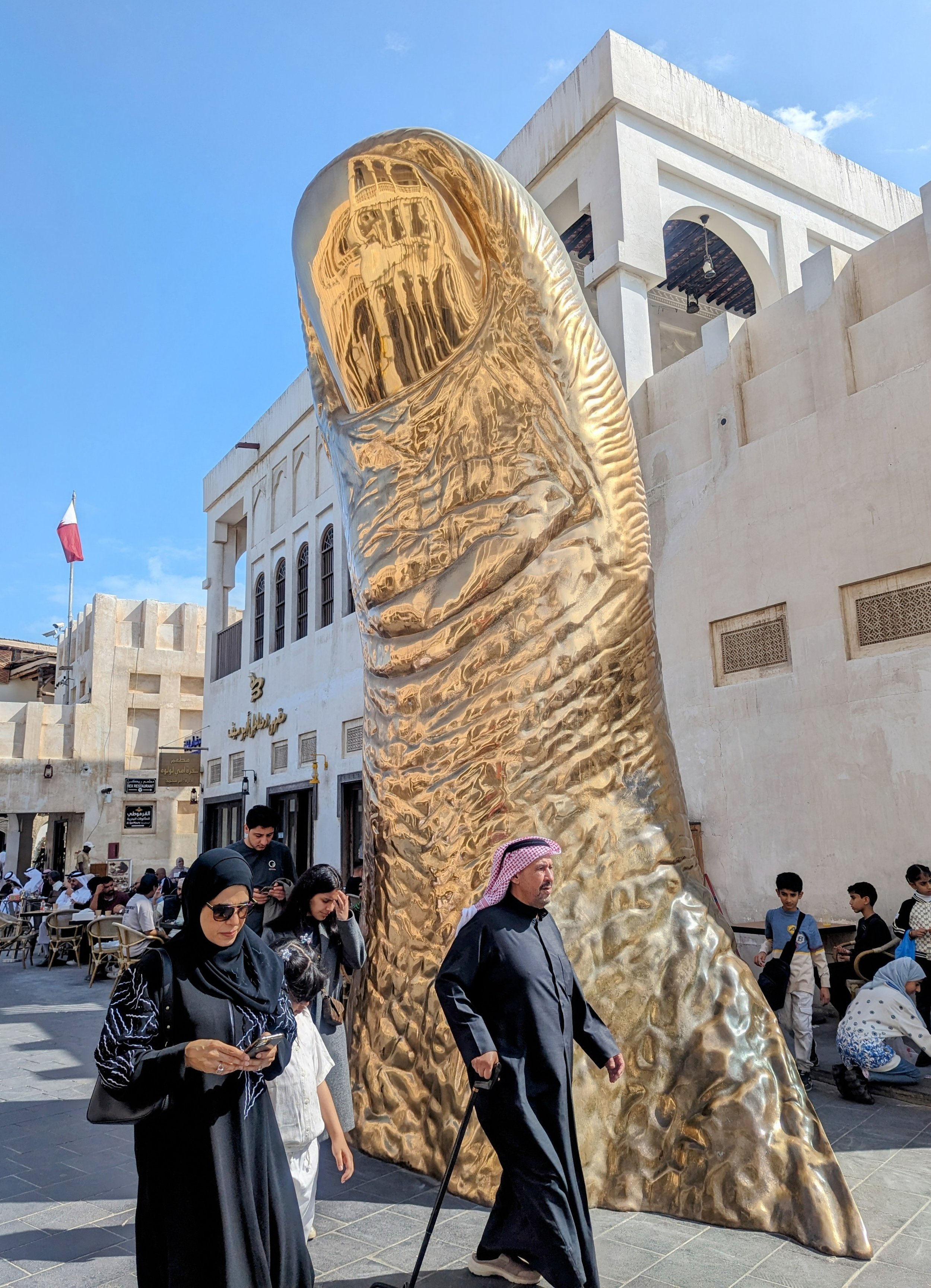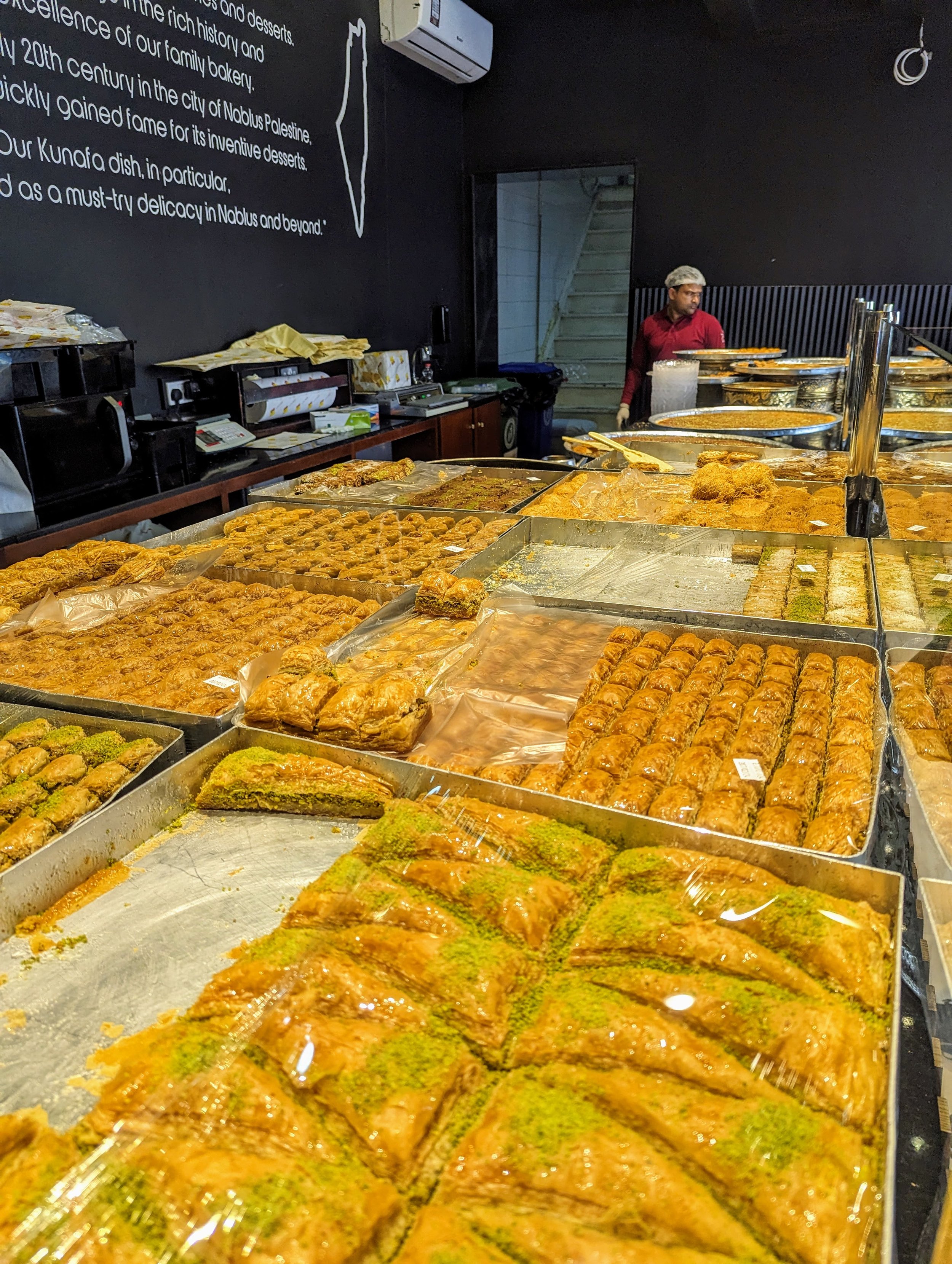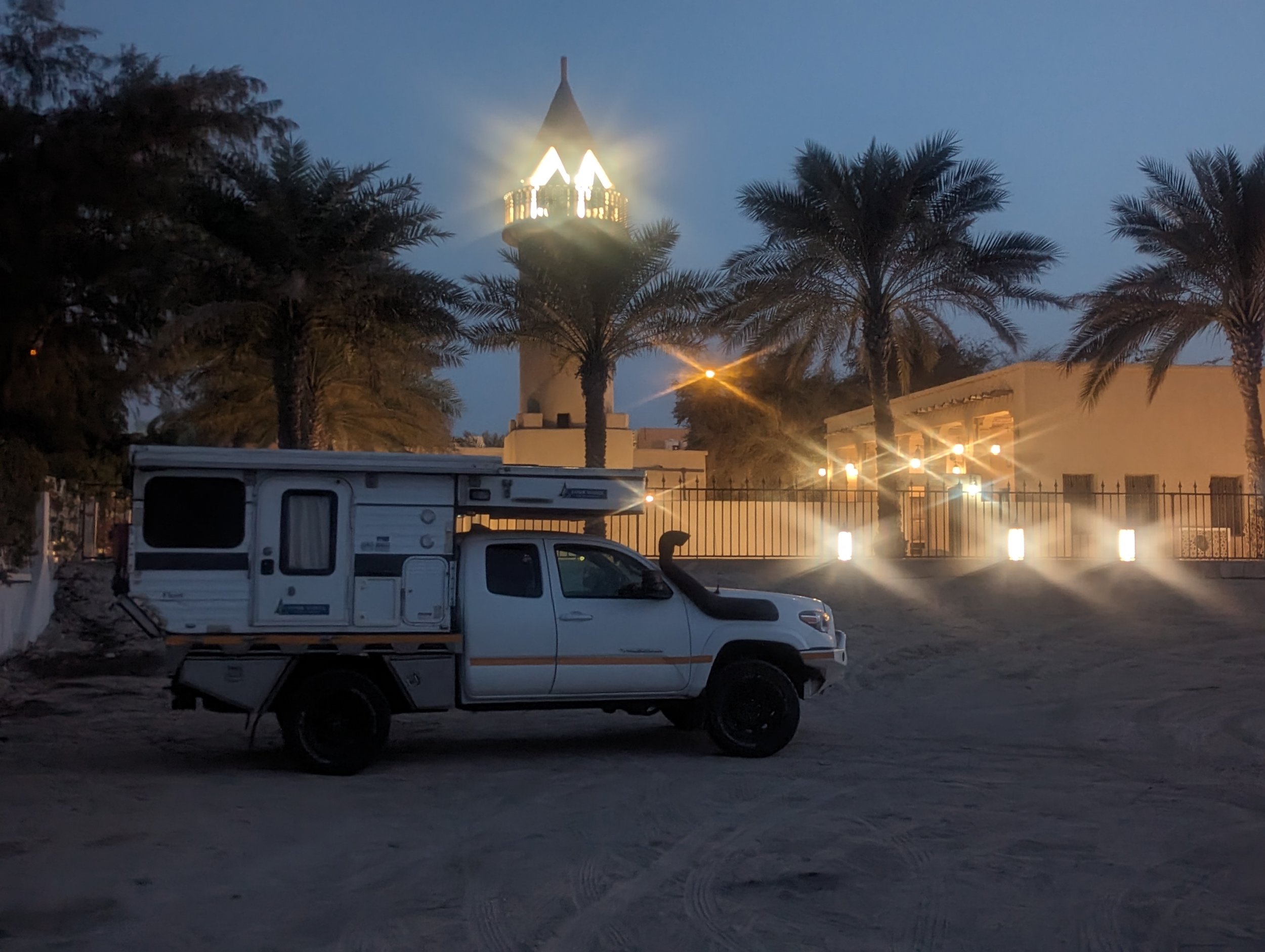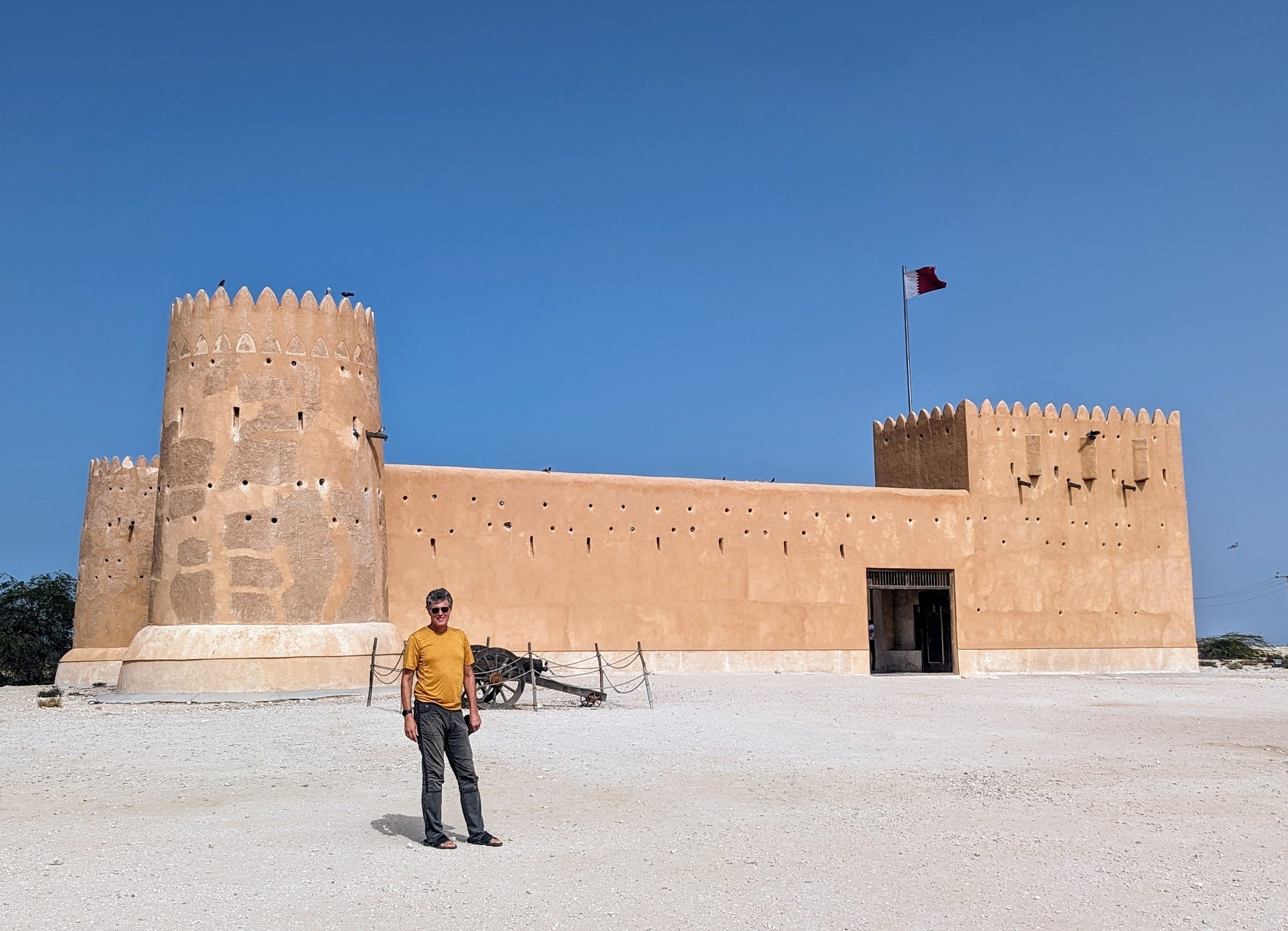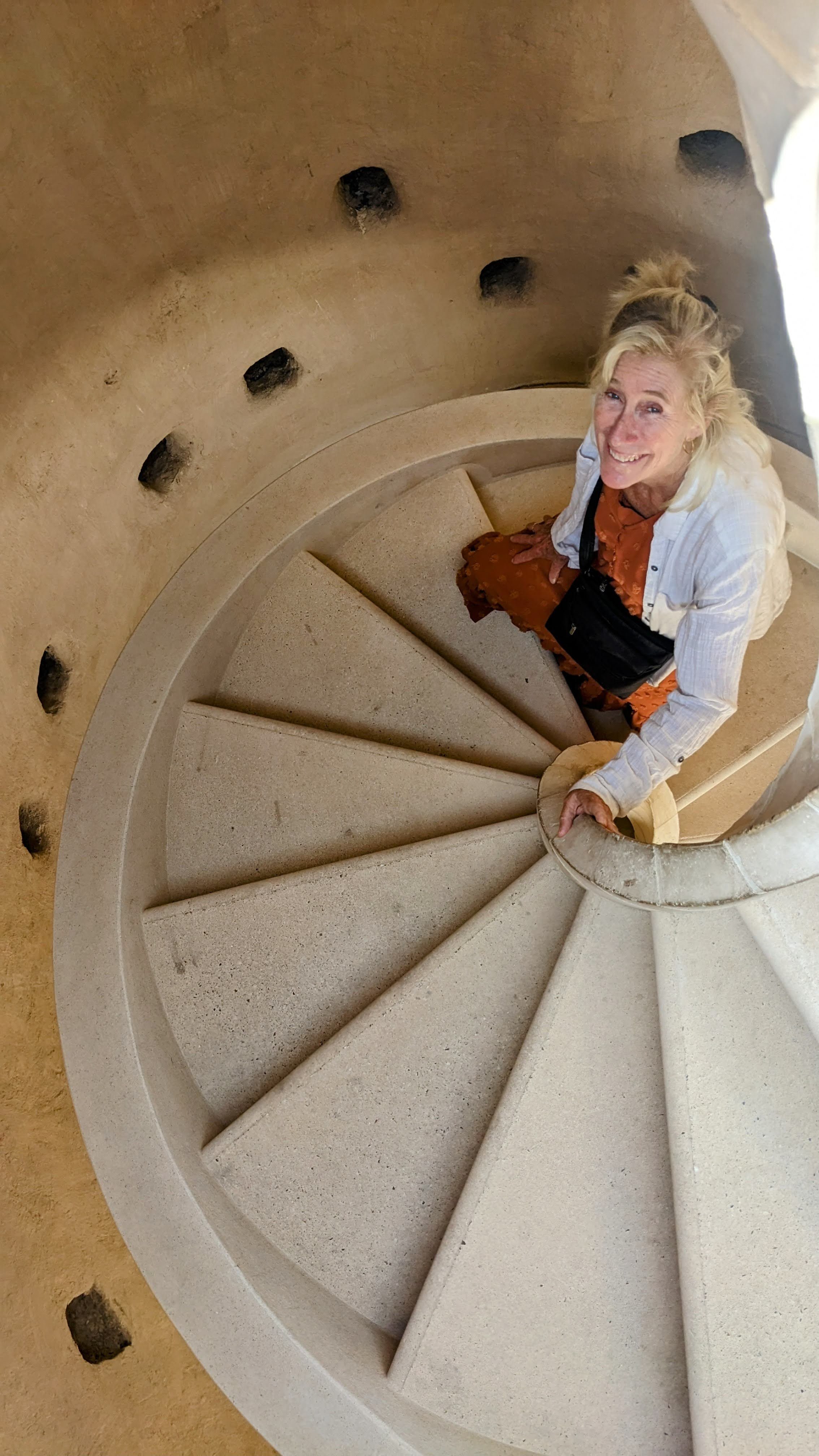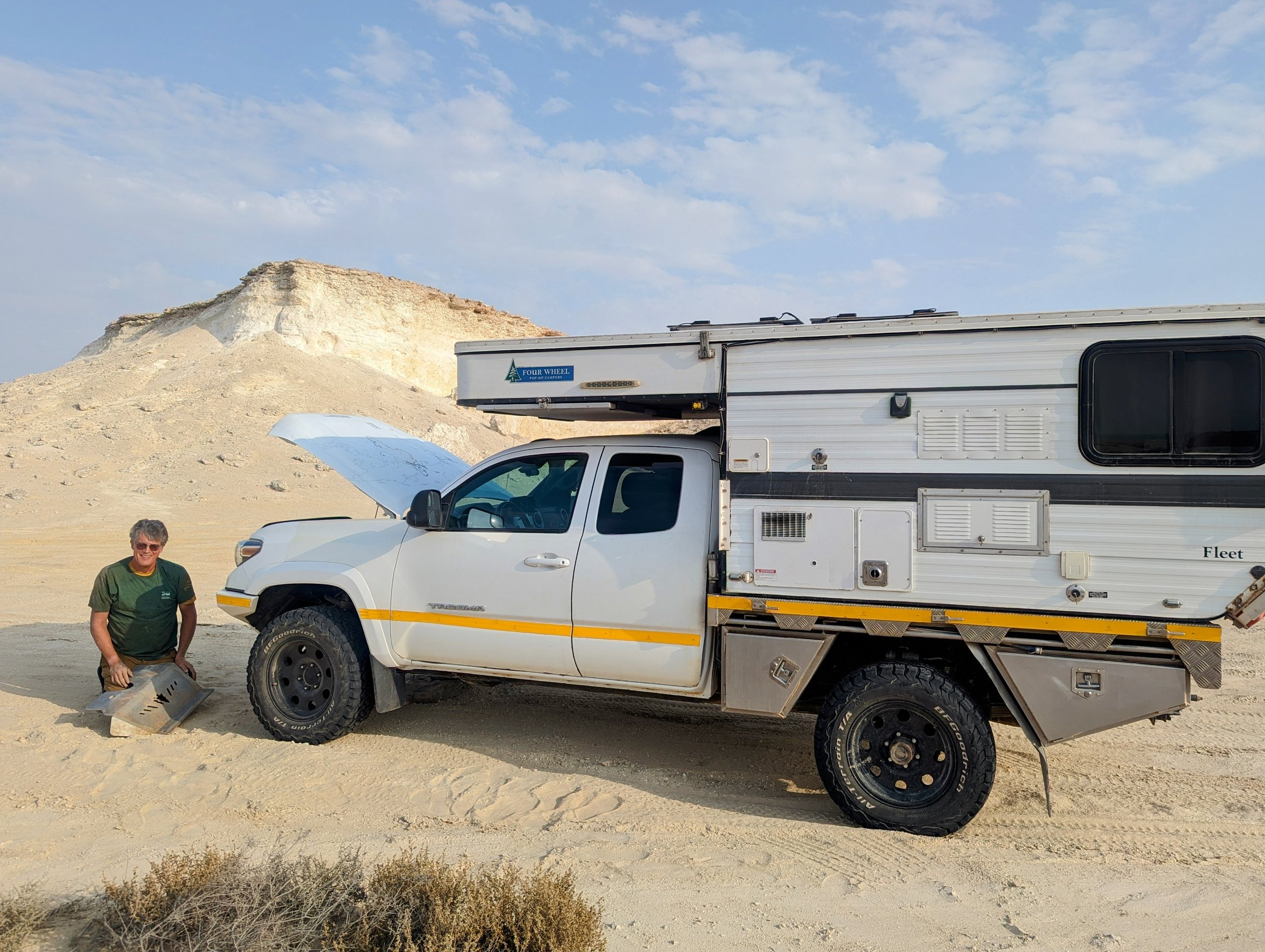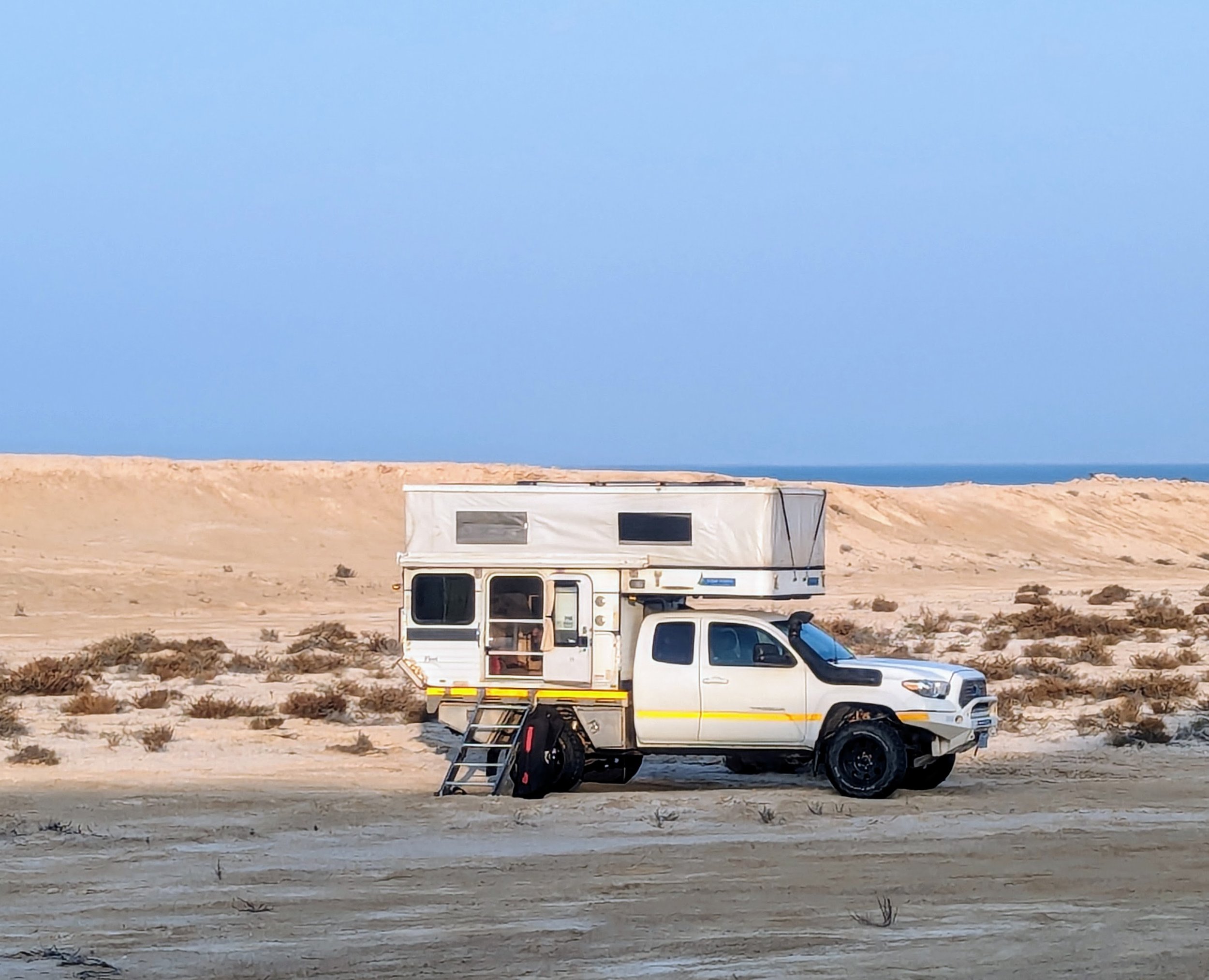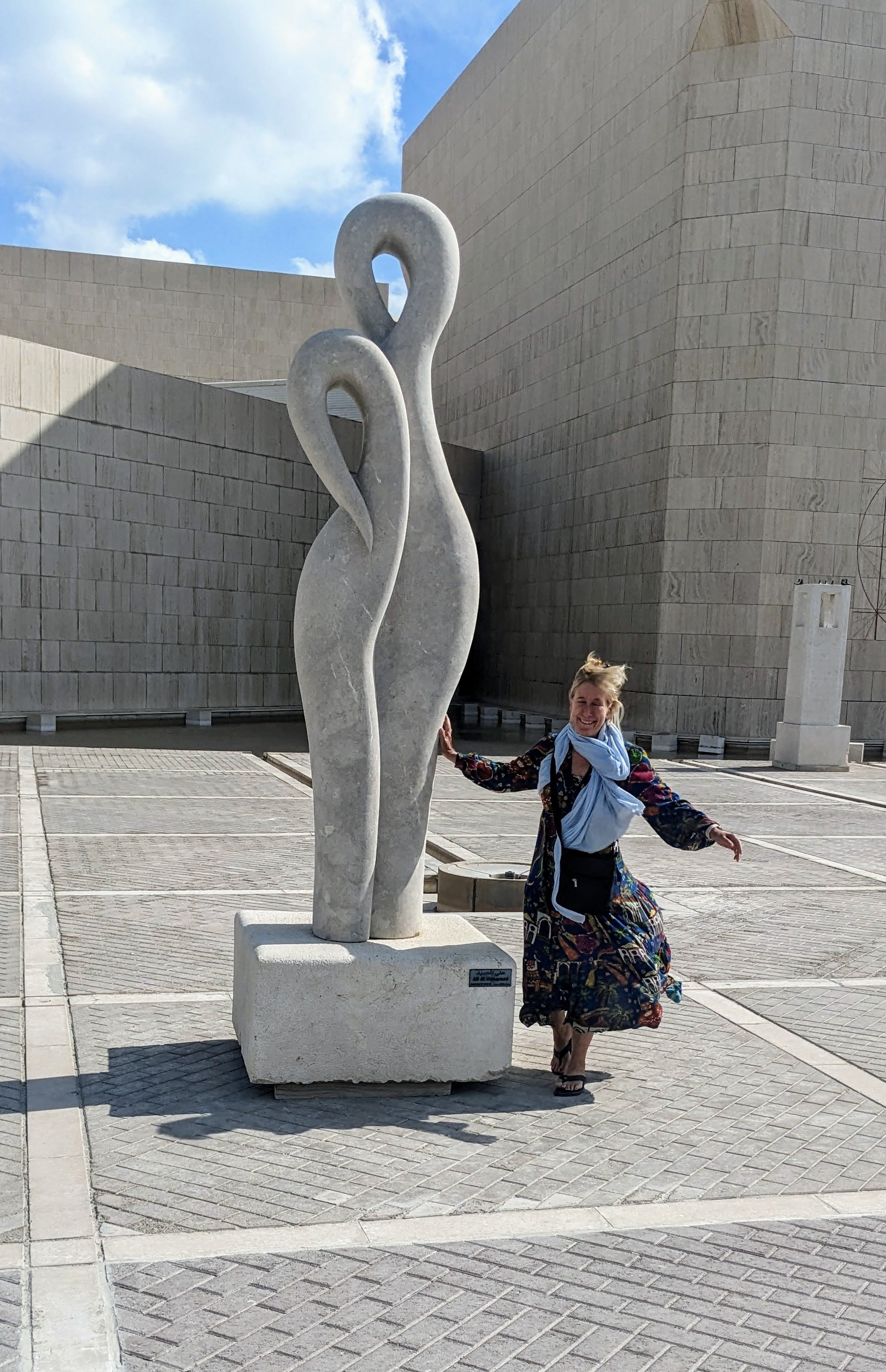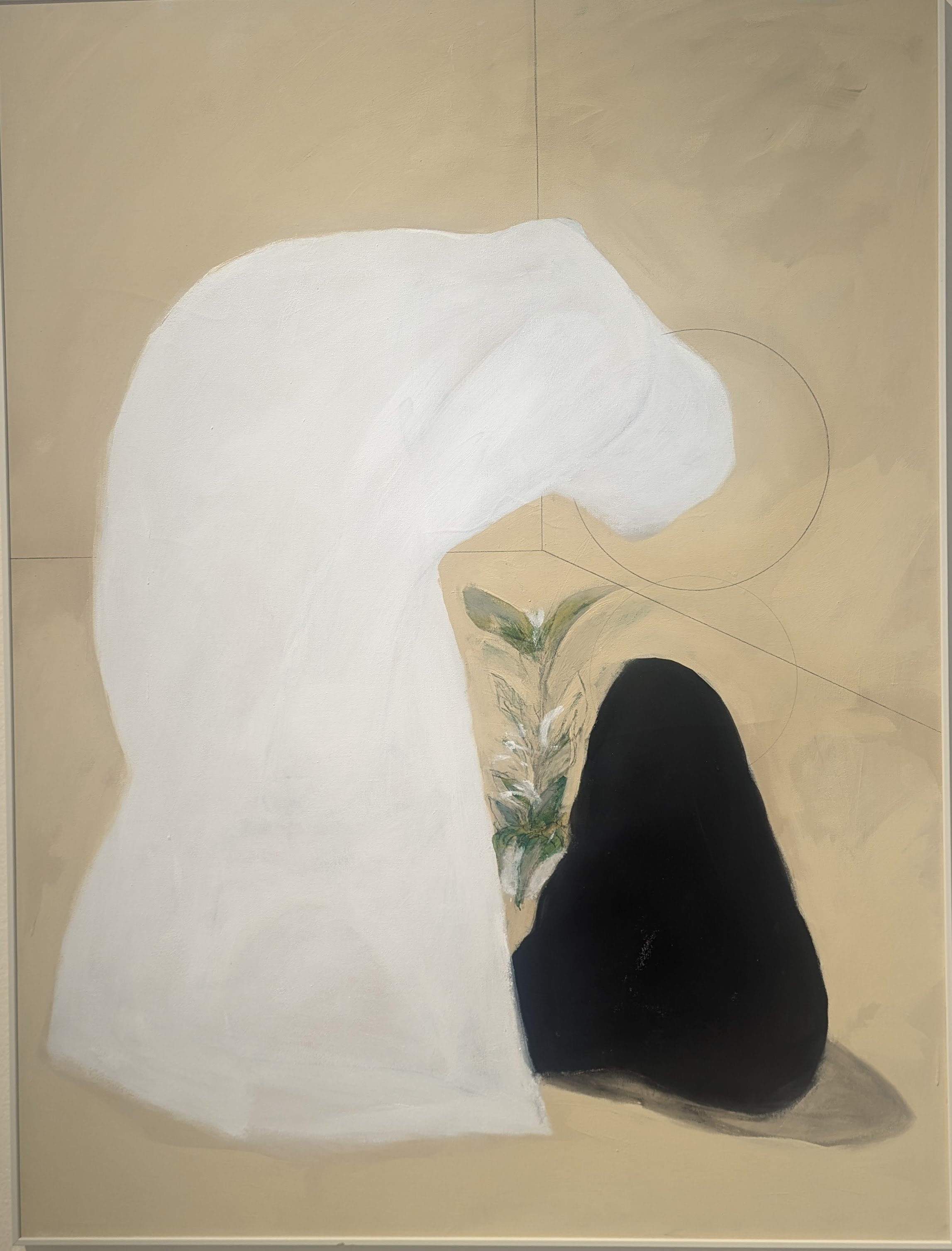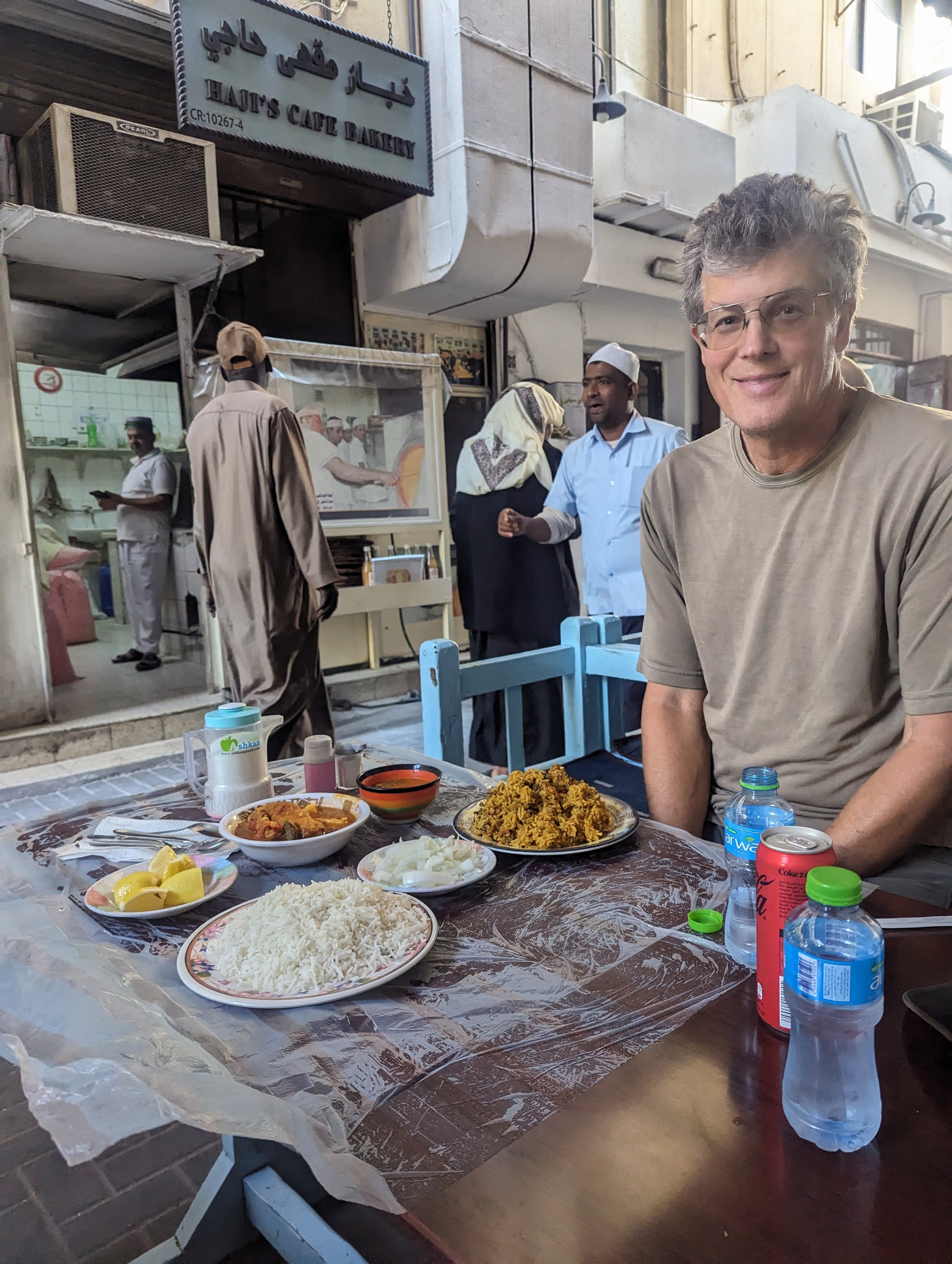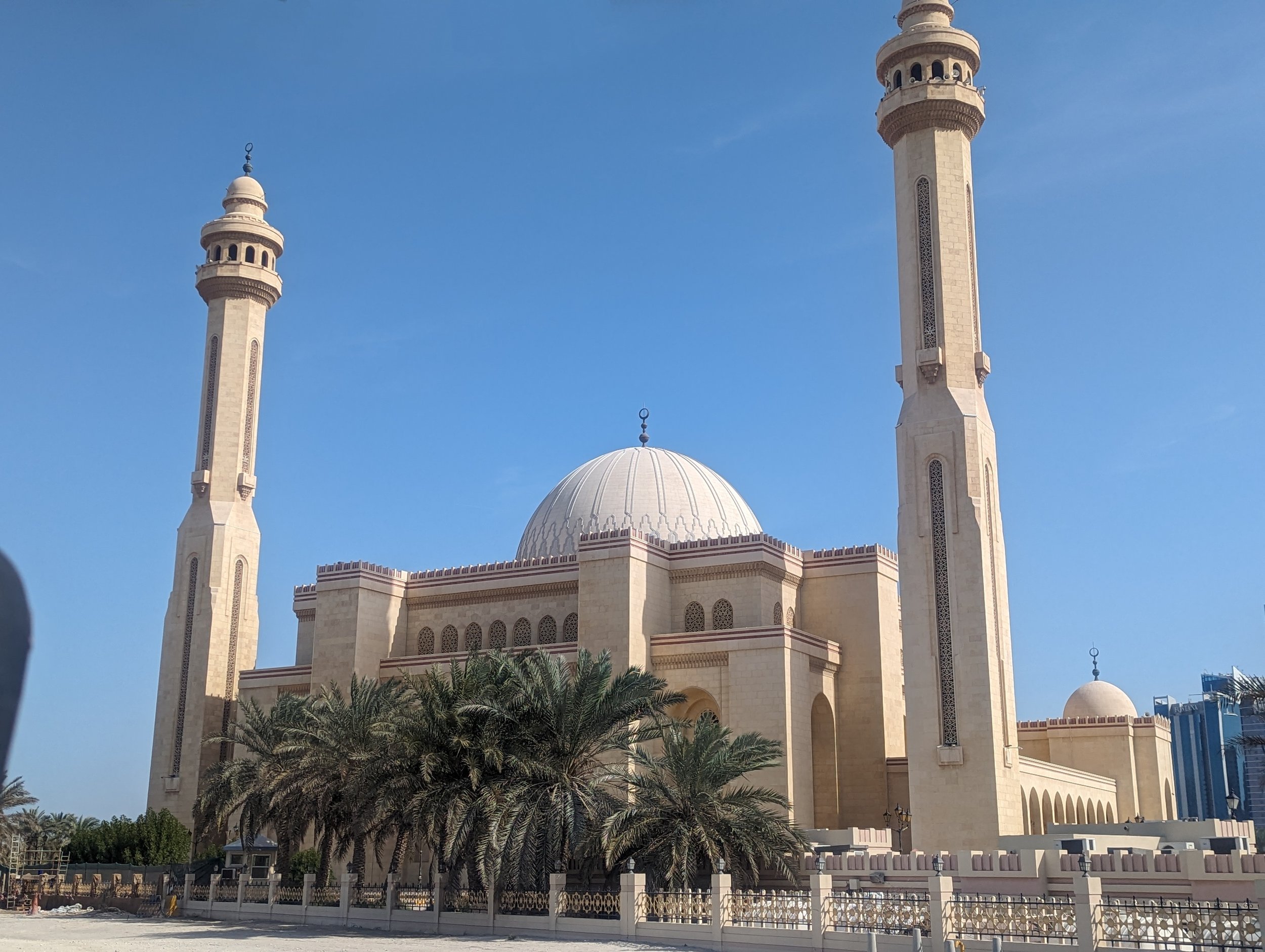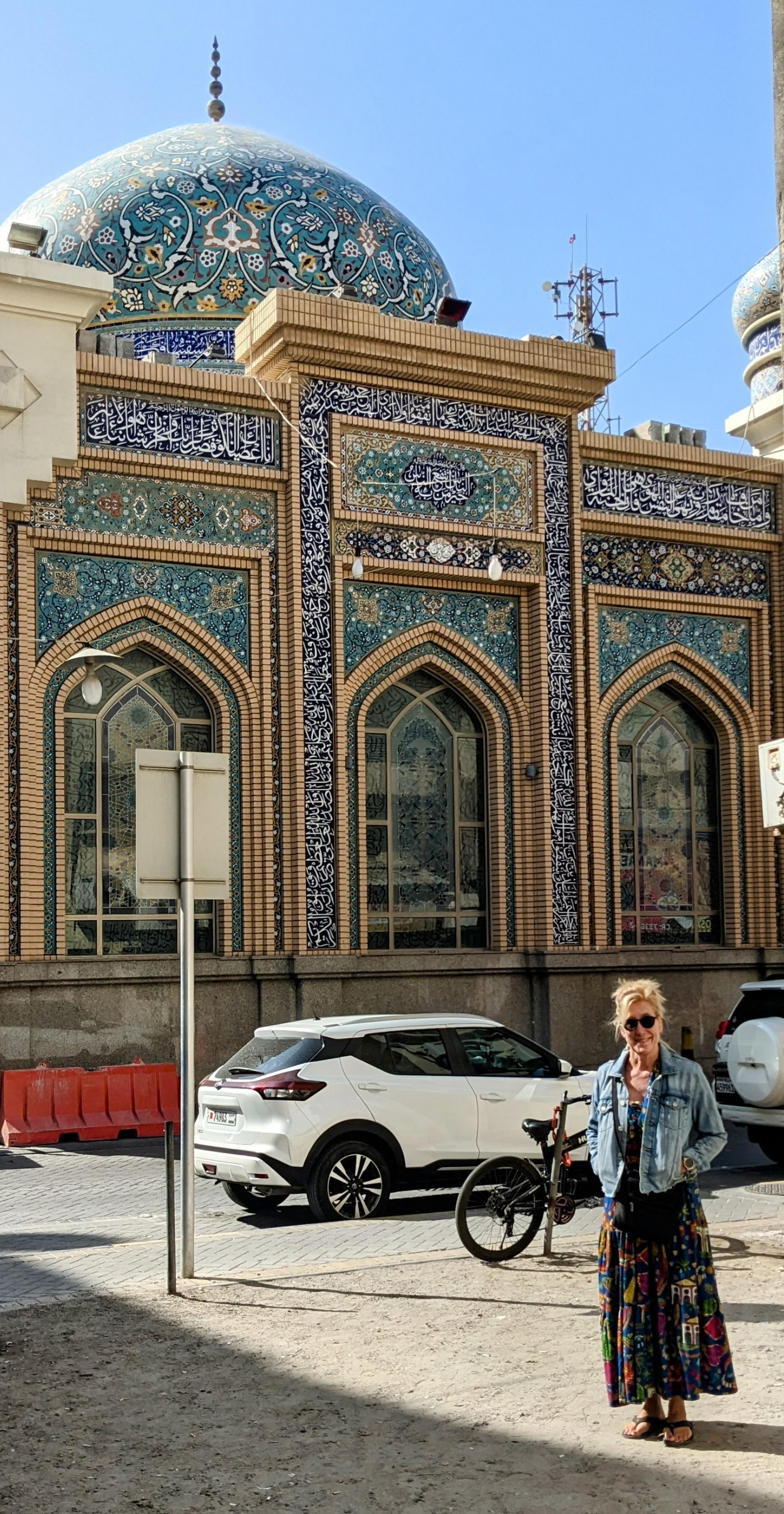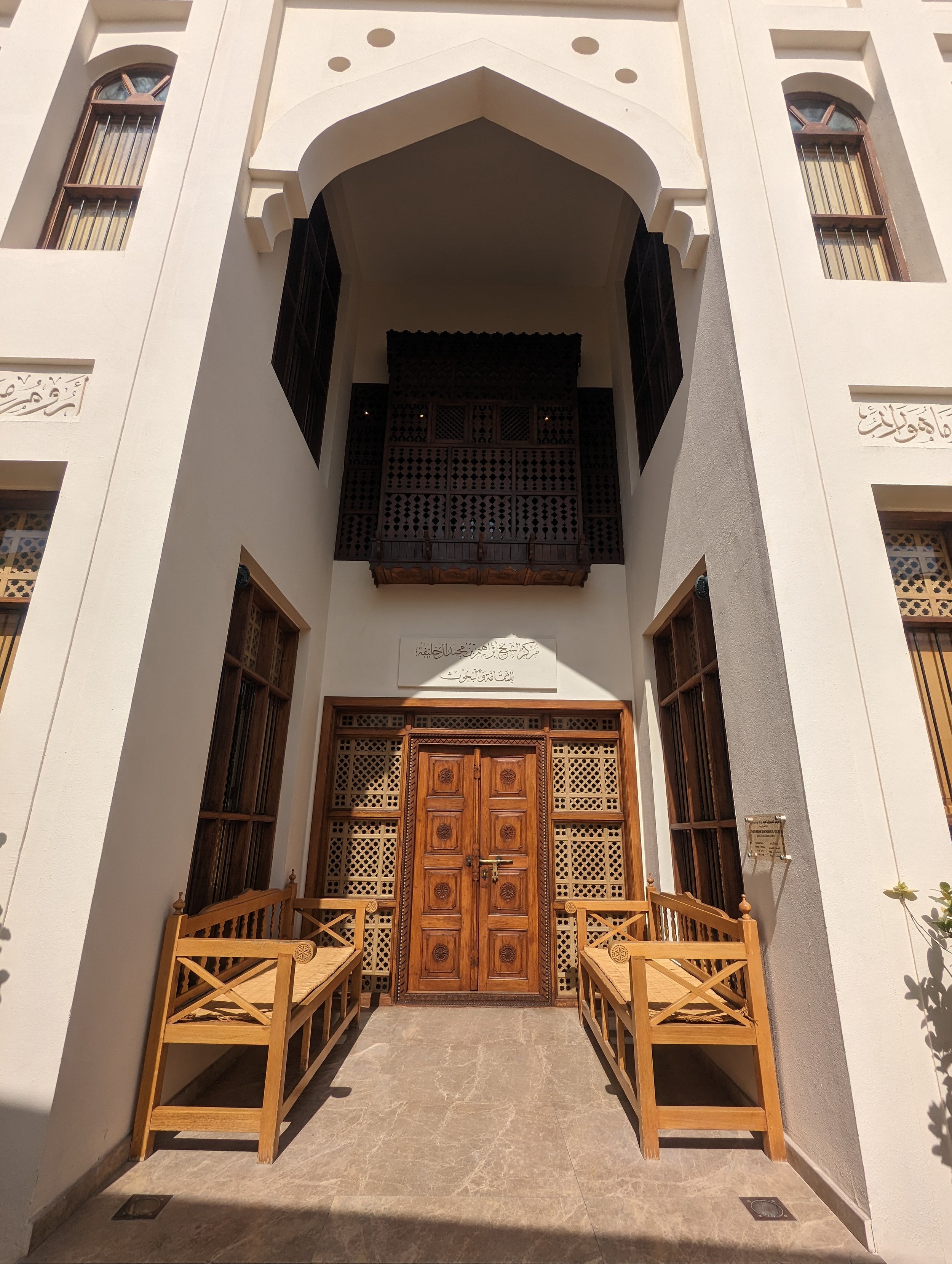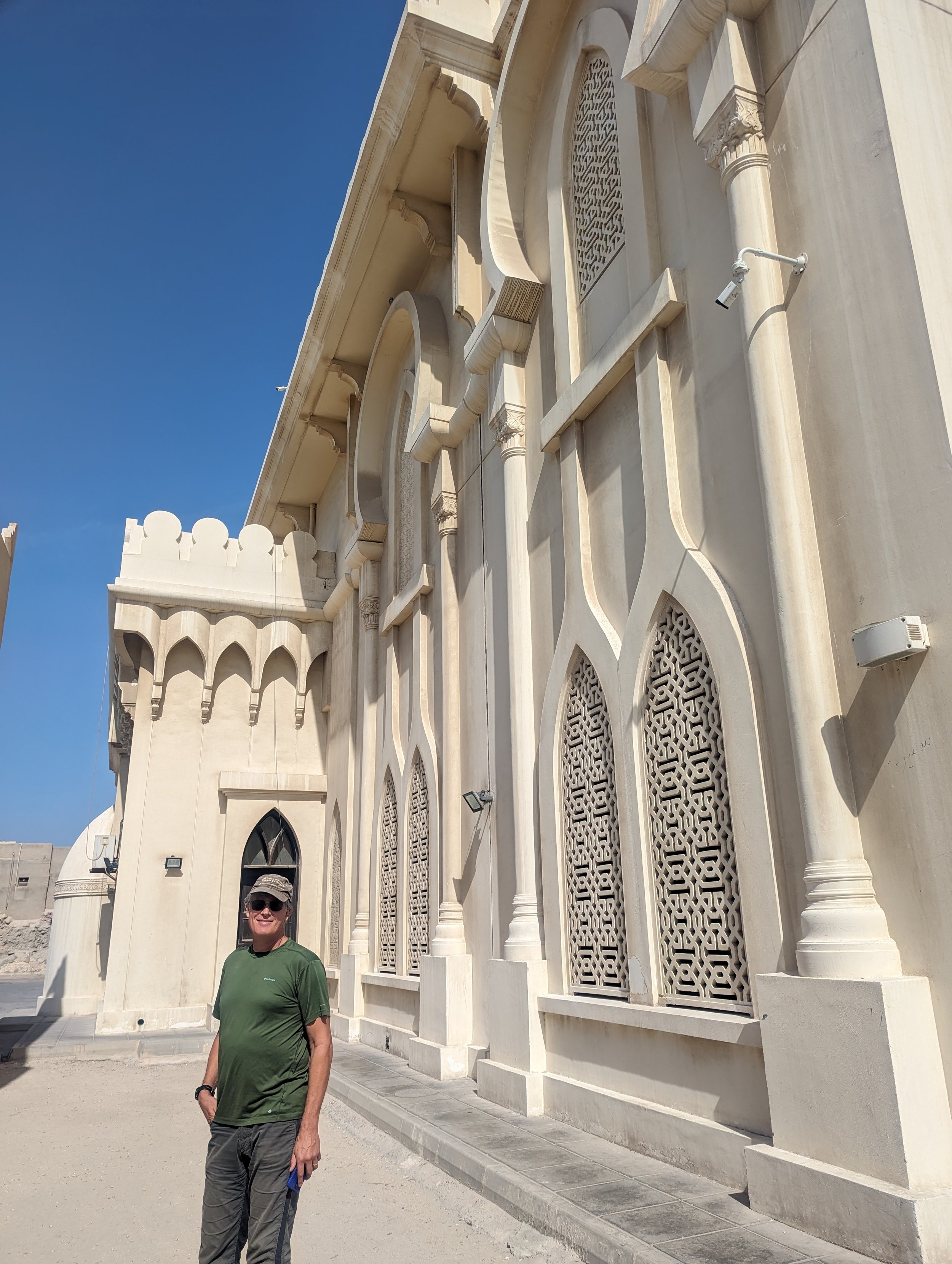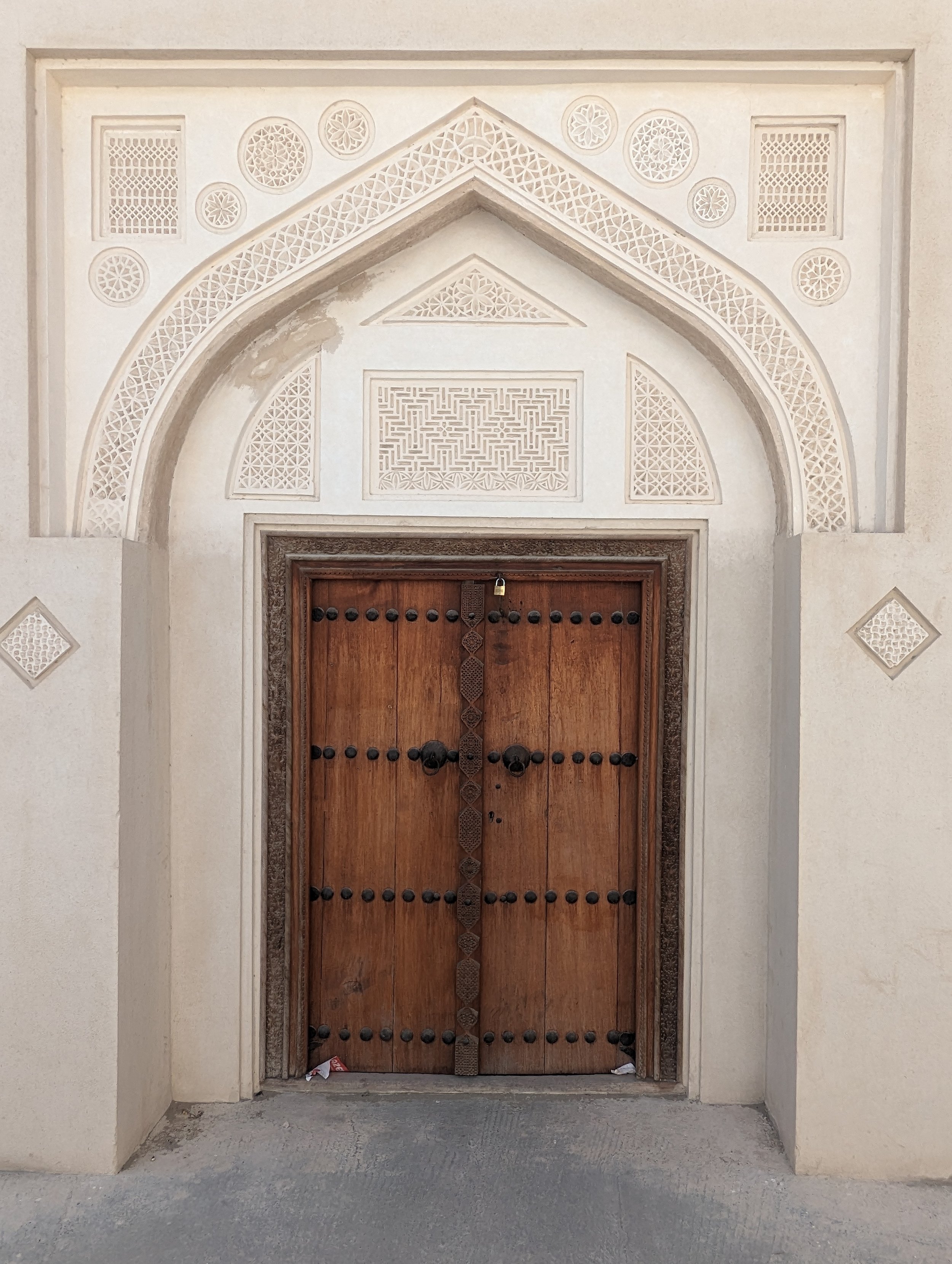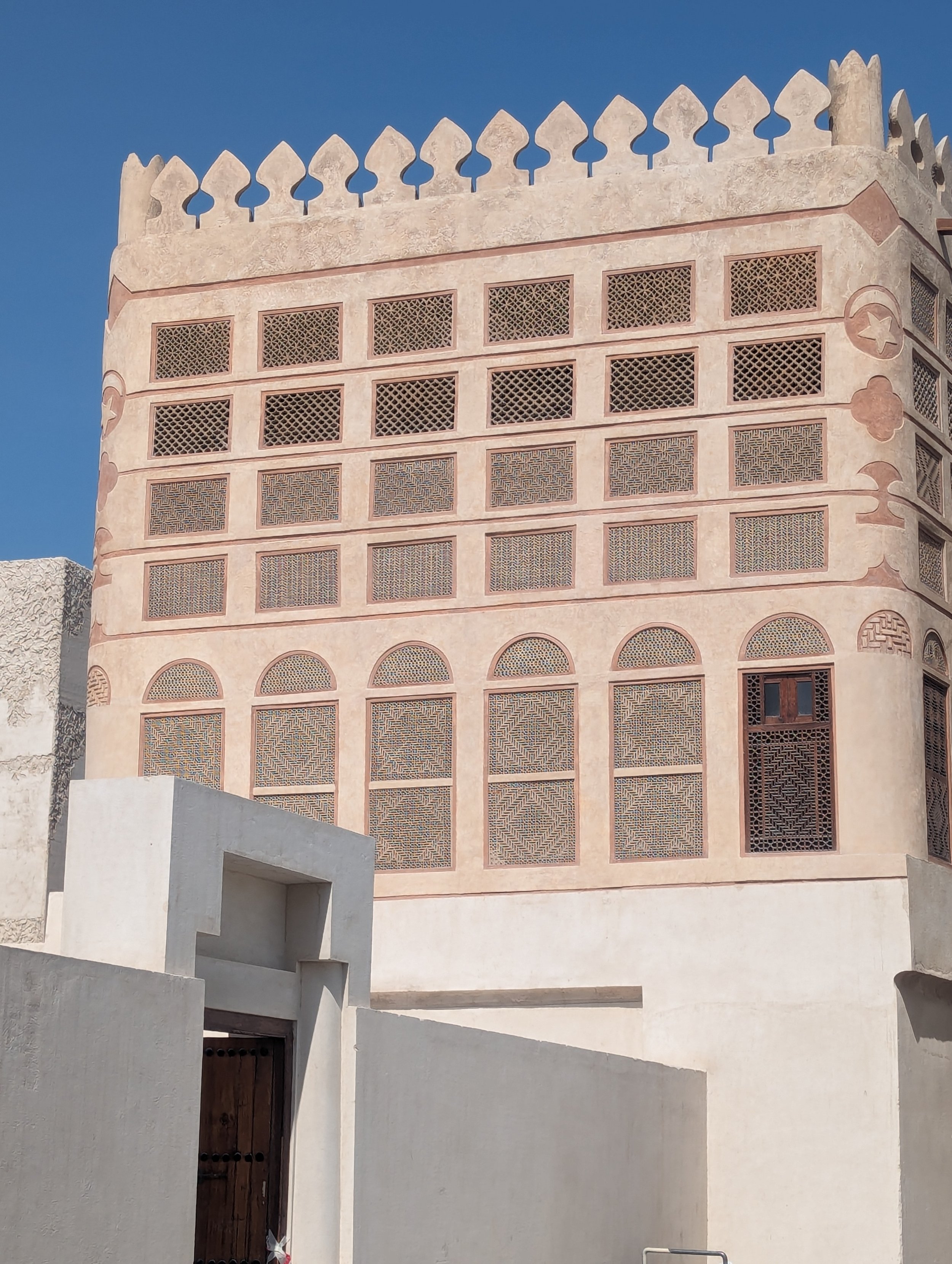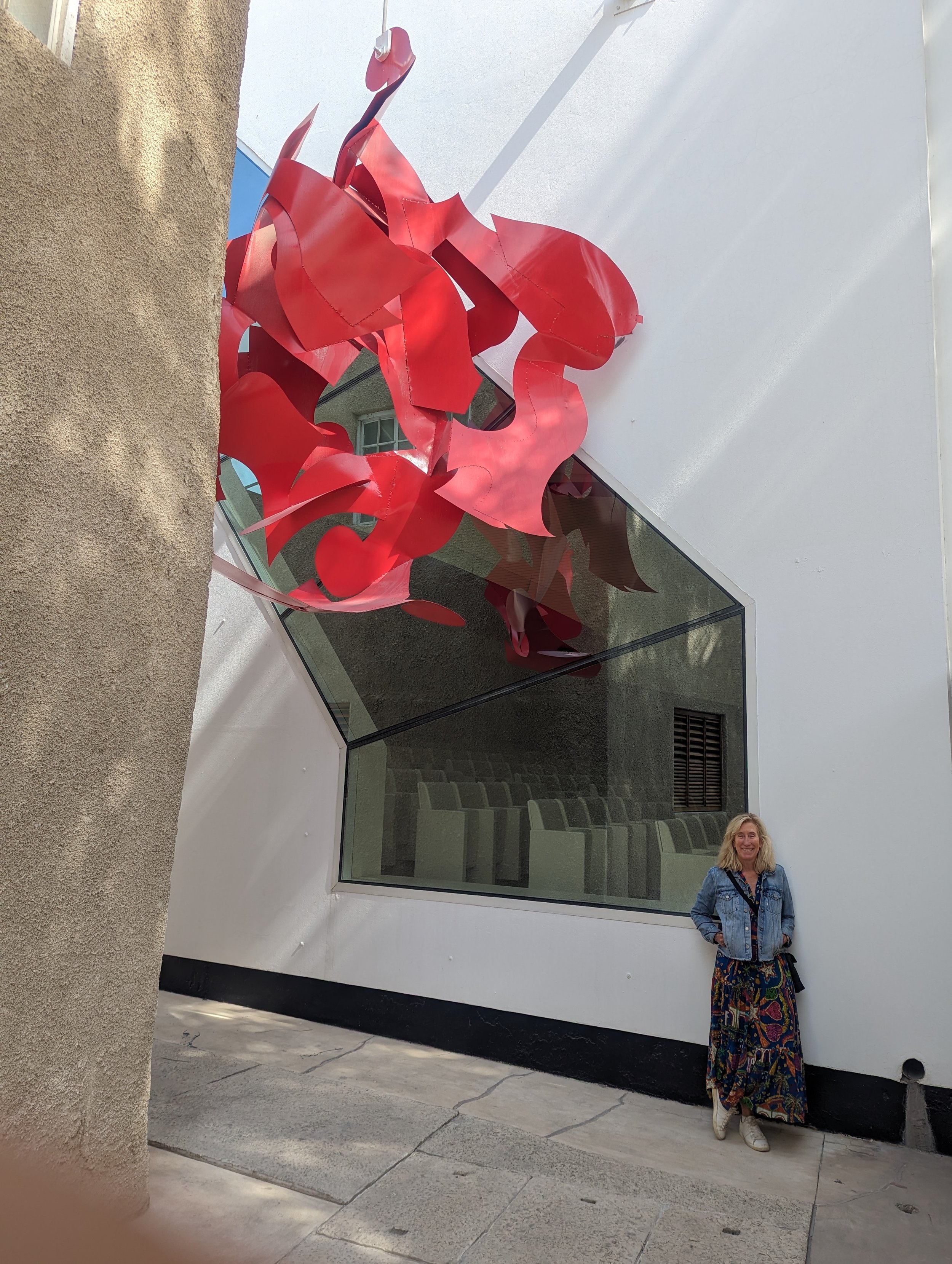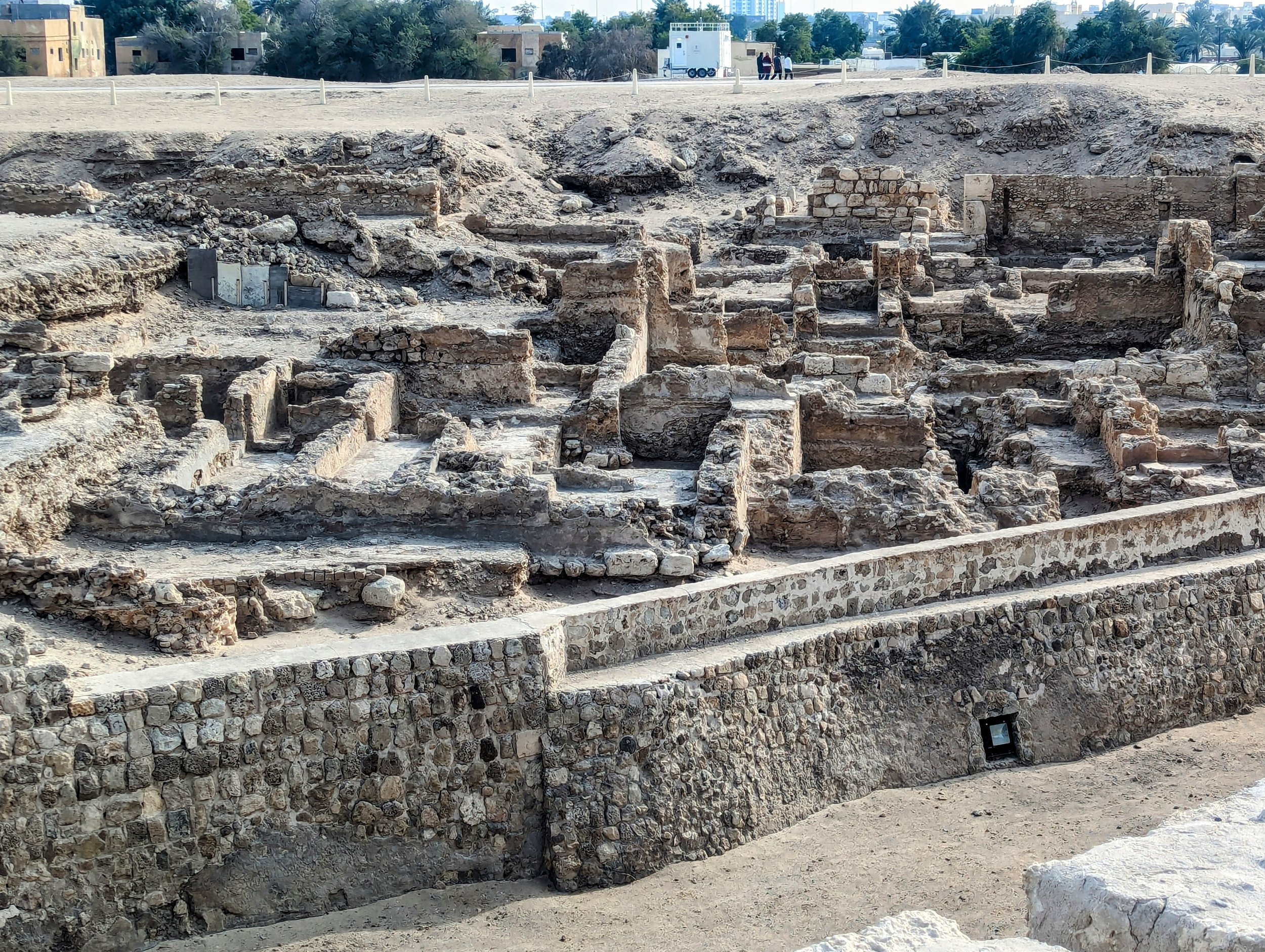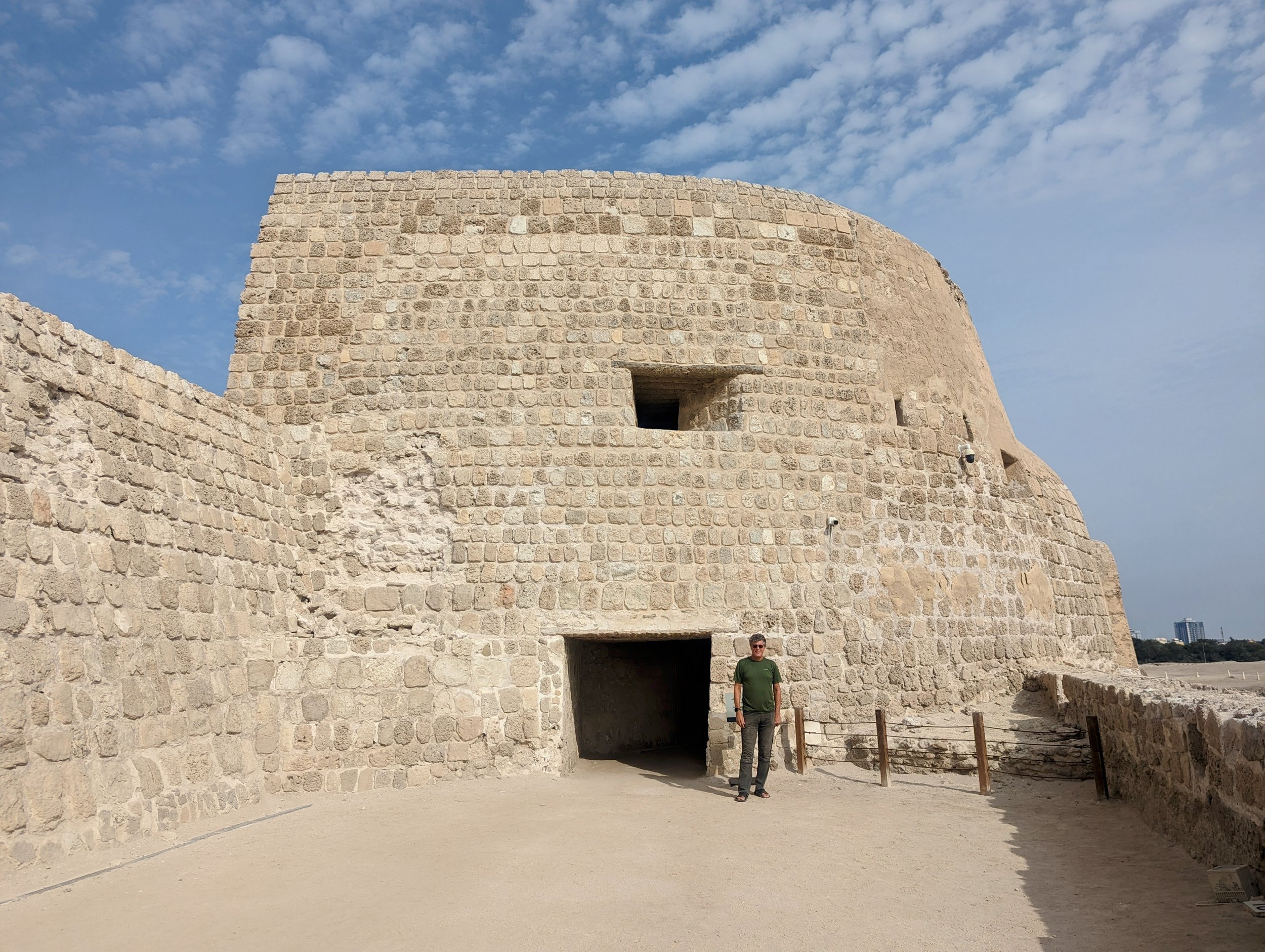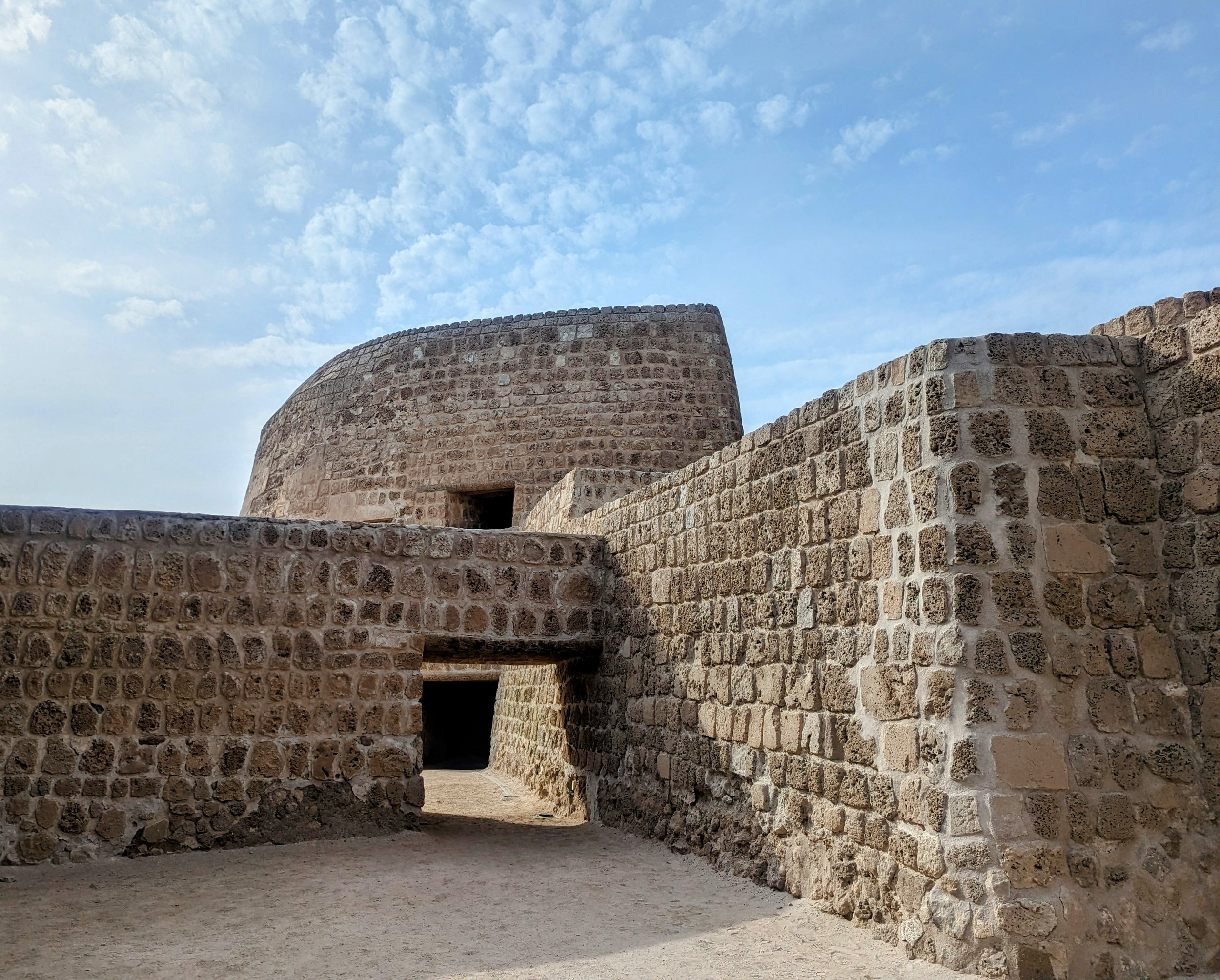Qatar & Bahrain
Al Zubara fort, Qatar
Qatar and Bahrain are similar in that they are both two small Arabian Gulf countries with economies based on oil and gas. For both of them, their main connection to the rest of Arabia is through Saudi Arabia. Qatar is a small peninsula land locked by Saudi Arabia. Bahrain is an archipelago of islands off the coast with the main island connected by a bridge to Saudi Arabia. But despite their similarities they still each have unique personalities.
Our route through Qatar and Bahrain, accessing each through Saudi Arabia
Qatar
Qatar’s capital city and cultural and financial hub is Doha, home to 80% of the nation’s 2.7 million people. The city was great to explore. Similar to other Arabian Peninsula cities it was clean, well laid out, easy to navigate by car yet also very walkable.
Traditional boats (now used more for tourist sightseeing than fishing) in front of the modern Doha skyline
Waterfront sculpture of a oyster with a pearl
The oil and gas boom of the 1960’s led to economic prosperity for the Qataris. The Qatari citizens make up only about 11% of the total population while the remaining 2.3 million people are immigrants living on work visas.
The tiny gas rich emirate has focused on economic independence and investment in infrastructure. Tourists are welcomed and appreciated. Alcohol is not illegal as it is in nearby Saudi Arabia, but is only available at licensed restaurants and bars for a premium price. (Beers run $6-$8, a cheap brand glass of wine $8-$10, we opted to go dry while we were there.) The country is run by a monarchy and the current Emir, Tamim bin Hamad Al Thani is the 8th Emir to rule from the same royal family. The country’s leadership has taken a strong role in peace keeping between the Middle East and the West and the largest US military base in the Middle East is in Qatar. The country felt friendly, safe and prosperous.
View of the skyline of Doha, Qatar
We were still adjusting to the absolute safety we were experiencing on the Arabian Peninsula. We were able to let go of the idea that the truck had to be in “secure” parking if we left it. Walking after dark was not only safe but the cultural norm - children and families were out walking way into the night. The trade off to the strong authoritarian governments which removed some personal freedom was a strict adherence to rules, and crime was almost non existent. There were no pick pockets and no people asking for money. We were switching currencies frequently and shop keepers would politely correct us when we accidentally tried to overpay. The vast majority of the country’s people are working immigrants who need their jobs and know that any transgression would result in being sent home so they obey the rules. We did have some heightened awareness of the possibility of terrorist attacks, especially as US citizens, but we never felt threatened. Everywhere we went people seemed glad that we were visiting. There was a police and military presence throughout the peninsula, but check points were very brief and not frequent.
Museum of Islamic Art on the waterfront in Qatar
In addition to the massive rebuild of the modern city of Doha, Qatar has invested in cultural infrastructure and art.
Large golden thumb sculpture in Souq Waqif, representing a national soccer victory in 2019
Despite a modern architectural feel, the country retains its traditional Muslim roots with Islam as the primary religion. Most of the Qataris are traditionally dressed and the call to prayer sounds five times a day. Souq Waqif in the downtown area blends elements of the traditional souq with contemporary cafes and restaurants and is a pleasant place to walk and people watch.
Visiting the falcon souq - where birds are trained for the traditional art of hunting in addition to being bought and sold and cared for in a dedicated hospital
Our favorite shop in Souq Waqif - amazing baclava
Pedestrian traffic in the souq
Wild camping was a little more difficult in Qatar, it did not have the same huge empty landscapes as its neighboring countries. Much of the sandy peninsula was fenced off for the oil and gas industry. We spent one challenging night camped in a beach parking lot, not realizing how close we were to the minaret speakers for the nearby mosque. The 4:30am call to prayer vibrating the canvas sides of our pop up camper was a bit of a shock.
Beach camping spot close to a mosque
We appreciated the regional focus and re-shaping of this old family favorite
Visit to Al Zubara fort
Al Zubara fort, Qatar’s Unesco site was a beautifully restored shell. But our favorite part of the visit was learning about the pearl diving industry and seeing the ruins of the nearby ancient village. Exhibits and the on site tour guide brought to life the reality of the divers jumping into the water with heavy weights to plummet them to the bottom, baskets around their necks, retrieving thousands of oysters a day with likely only one pearl to be found per 5,000. It was a difficult life but the mainstay of the local economy until the 1960’s when gas was found.
Spiral stair case inside the fort
Remains of ancient fishing village, slowly being restored
Maintenance time - Andy changing the oil
And then our last night in Qater, we found a remote desert spot by the coast - our favorite.
The sun goes down on our time in Qatar
Bahrain
Bahrain is slightly less prosperous than Qatar and also more socially relaxed. It has half the population of Qatar with 50% of its residents living in the capital of Manama. Although not as shiny and new as Doha, Manama had a charm of its own. The country is really a collection of islands with those surrounding Manama connected by modern bridges.
Visiting the National Museum of Bahrain
Like most of the cultural attractions in both Qatar and Bahrain, the National Museum was free to enter and interesting to wander around. The museum blended historical exhibits about the country with contemporary art shows featuring some of the most renowned artists. Dawn had fun with the art and Andy had fun with the history.
“Father and Son” by artist Nader AlAbbasi
“untitled” by Bahrain artist Balqees Fakhro
After a comprehensive morning at the museum food was in order so we made our way to local institution Haji’s Cafe and filled up on traditional machboos (savory chicken and rice), dining on the street.
Lunch time at Haji’s
And wandered the souq - more modern than many other we had been to, the souq in Manama was comprehensive - selling everything from luggage to clothing to food
We find traditional Islamic architecture to be beautiful and enjoyed wandering the street of Manama to see what we could find.
Gorgeous mosaic work
We especially enjoyed exploring the old quarter on Muharraq Island. Splendid doors, intricately carved facades and quiet streets, it was a peaceful ramble.
And random public art along the way
We found this beautiful wood working studio highlighting the art of boat building
Our final stop outside of Manama was the old fort, Qal’at al-Bahrain. Originally the site of the capital of the ancient city of Dilmun, the Portuguese built a fort on the site which still contains layers of archeological remains from it’s first occupation in 2300 BC.
Ongoing excavations of the ancient capital of Dilmun
Restored 16th century Portuguese fort
Two more countries and cultures to explore! We know it was a surface level visit, but we still came away feeling like we learned something new. On our way to Saudi Arabia now, a much vaster place to explore. As always, thank you for reading and coming along with us.
